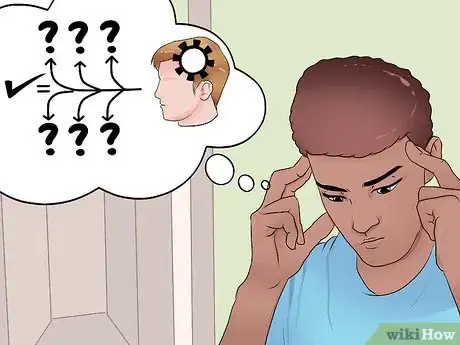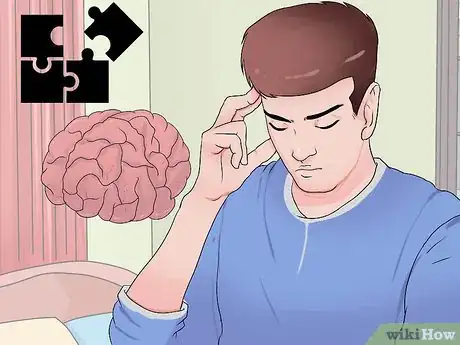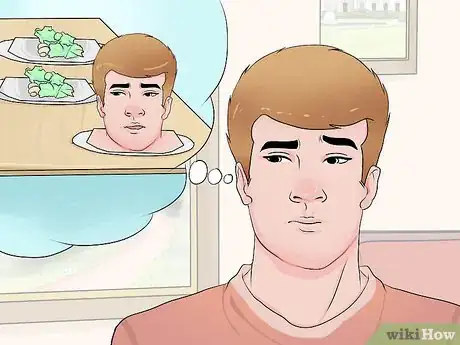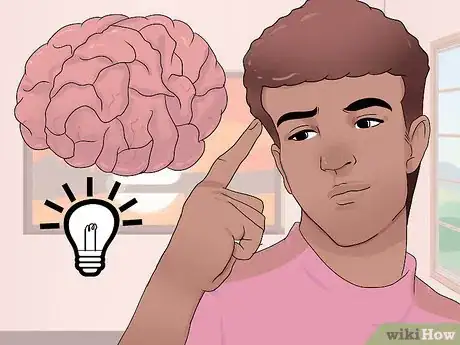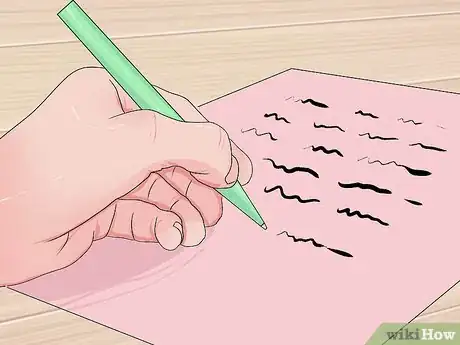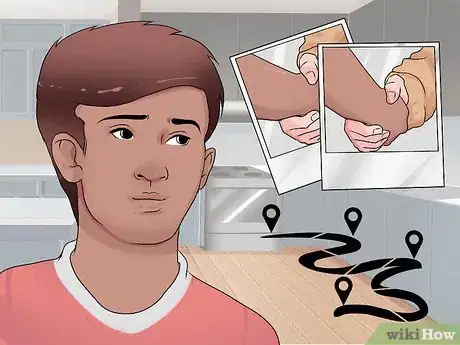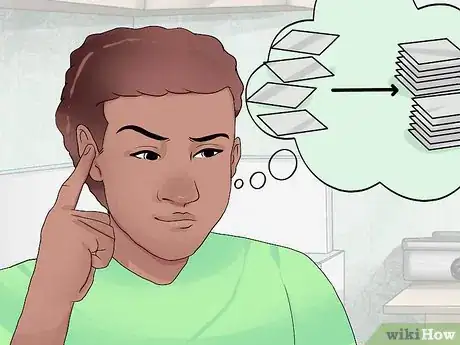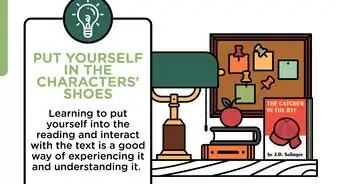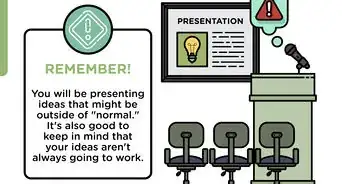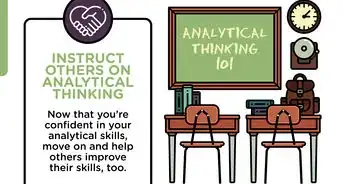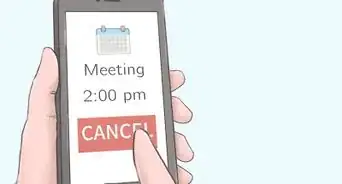This article was co-authored by Trudi Griffin, LPC, MS. Trudi Griffin is a Licensed Professional Counselor in Wisconsin specializing in Addictions and Mental Health. She provides therapy to people who struggle with addictions, mental health, and trauma in community health settings and private practice. She received her MS in Clinical Mental Health Counseling from Marquette University in 2011.
This article has been viewed 87,630 times.
Have you ever found yourself in a situation where you can't seem to find the right answer or solution? If so, then you may want to apply divergent thinking. It is the ability to see lots of possible ways to interpret a question and lots of possible answers to it. It is a thought process used to generate creative ideas by exploring many possibilities. Instead of taking obvious steps and walking along a straight line, one looks at different aspects of the situation, creating different results.[1] Applying divergent thinking isn't a difficult process if you know what to do.
Steps
Defining Divergent Thinking
-
1Create solutions to problems. Divergent thinking is a form of creative thinking, so it examines a problem using more of an out-of-the-box mindset. Instead of settling for a status-quo answer or no answer at all, you can try to solve the question by asking "what if I tried it this way?" It is a thought process used to generate creative ideas.[2] by exploring many possibilities. Instead of taking obvious steps and walking along a straight line, one looks at different aspects of the situation, creating different results. Divergent thinking encourages seeking and considering new and different methods, new and different opportunities, new and different ideas, generating new and different solutions.
-
2Use the right brain hemisphere. Whereas the left side of our brain is rational, analytical, and controlling, our right hemisphere is where we acquire our creativity, intuition, and emotional expression. It plays a key role in divergent thinking and the creative problem solving that depends on it. Divergent thinking is spontaneous, free-flowing, non-linear manner. It uses lateral, nontraditional, and unconventional thinking.[3]Advertisement
-
3Deviate from the standard problem-solving techniques used in schools. Creative thinking is needed to solve problems; however, we don't really get to use it in the classroom. Instead, linear convergent thinking is required with multiple choice tests as a great example. This is not how a divergent thinking solves problem because it's associated with four main characteristics:
- Fluency – the ability to generate numerous ideas or solutions quickly;
- Flexibility – the ability to think about different ways to solve a problem at the same time;
- Originality – the ability to generate ideas that most people don't consider;
- Elaboration – the ability to not only think through the fine points of an idea but to carry it out as well.
Stimulating Your Divergent Thinking
-
1Learn how to think and meditate. Explore the ways you learn, and then create new patterns. When you're done, think about them. For those ideas that are more theoretical, figure out how you can connect them to your life experiences and what you've learned from experiments you've conducted in the past.[4]
-
2Force yourself to see with unusual points of view. Do this even if it seems silly. For instance, imagine life as a banquet table, and you as one of the dishes. Now evaluate the table through several points of view of the diners.
- What would they expect to see on that table?
- What would disappoint them if not included?
- Is there anything laying on the table that's absurd, like a blow dryer?
- How can you make the arrangement more appetizing, and what can you add to make it unappealing?
- By challenging your imagination, your brain gets used to new thinking patterns, and creating fresh ideas will become easier.
-
3Learn how to ask questions. Divergent thinking is not so much about finding answers as it is about asking the question to get to those answers. Asking the right questions will get you what you are seeking. Start with Who, What, Where & How. The simplicity is the key.
- The more you formulate specific questions that delve into the differences, the better your chance of succeeding.
- Simplify complicated matter by breaking it down into pieces. Then expose each one by asking, "What if?"
Practicing the Divergent Thinking Techniques
-
1Brainstorm for ideas. This technique is a tool that builds upon ideas. One idea generates another idea, which then generates another idea, and so on until a list of random ideas is compiled in a creative, unstructured manner. When brainstorming in a group atmosphere, allow everyone to think more freely. Don't pursue a practical solution. Instead, gather ideas that have the slightest relevance to the problem itself.
- No idea is criticized, and all ideas are recorded.
- After a long list of ideas is generated, one can go back and review the ideas to critique their value or merit.
-
2Keep a spiritual journal.[5] Using a journal enables you to capture and record the spontaneous ideas that people can have during unusual times and places. One member of the brainstorming team can be assigned to write down those ideas. Then later on, that journal can become a source book of ideas that can be developed and organized.
-
3Write freely. Focus on one specific topic and continue to write about it for a short period of time. Write down everything that comes to mind as long as it is about the topic. Don't worry about punctuation or grammar. Just write. You can organize, correct, and revise your content later. The purpose is to take a topic and then come up with several different thoughts about it within a short period time.
-
4Create a subject- or mind-mapping visual. Put the brainstorming ideas in the form of a visual map or picture. Make sure the visuals show the relationships among the ideas. For instance, your topic may be how to start a business.
- Write "Start a Business" in the middle of a piece of paper and draw a circle around it.
- Let's say you have come up with four subtopics that include products/services, funding, market, and employees.
- Therefore, draw four lines, one for each subtopic, from the circle that contains your main topic. Your drawing will now look like a child's drawing of the sun.
- At the end of each of those four lines, draw a circle. Write one of the four subtopics (products/services, funding, market, and employees) in each of those smaller circles.
- Next, let's say that within each of those subtopics, you have generated two sub-subtopics. For instance, with "products/services," you thought of "dresses" and "shoes," and with "funding," you came up with "loan" and "savings."
- So draw two lines from each of the subtopic circles, creating what looks like mini suns with two rays.
- At the end of each line (or "ray"), draw a smaller circle and write those sub-subtopics in each. For example, from the "products/services" subtopic, write "dresses" in one sub-sub topic circles and "shoes" in the other. From the "funding" subtopic, write "loan" in one sub-subtopic circle and "savings" in the other circle.
- Once completed, this map can be used to further develop the topic. This includes both divergent and convergent thinking.
-
5Arrange your ideas in an innovative manner. To acquire the best results, you will need to apply both divergent thinking and convergent thinking. They both play an important role in the process. Divergent thinking will supply the creativity while convergent thinking will analyze and evaluate those creative ideas and narrow them down.
References
- ↑ https://artof4elements.com/entry/35/divergent-thinking
- ↑ https://artof4elements.com/entry/31/what-is-creativity
- ↑ https://labs.psych.ucsb.edu/schooler/jonathan/publications/384
- ↑ https://artof4elements.com/entry/42/how-to-meditate
- ↑ Pantović Nataša, 2017, “Mindful Being towards Mindful Living Course”. Divergent Thinking and Using a Spiritual Journal (1). [Artof4elements Press, AoL Mindfulness Series Book #4]: pg43. ISBN-13: 978-9995754037.
About This Article
Divergent thinking means deviating from standard problem-solving techniques and using creative, flexible approaches instead. To get better at divergent thinking, force yourself to see from unusual points of view, imagining how different people would view your situation. For example, imagine your life as a banquet table, and imagine you are one of the dishes. Ask yourself how diners at the table would see you, how the arrangement could be more appetizing, or if anything on the table looks out of place. Additionally, get in the habit of asking questions like “What if?” to delve into the pieces of a complicated problem. For tips from our Counselor co-author, like how to create a visual mind map, keep reading!
